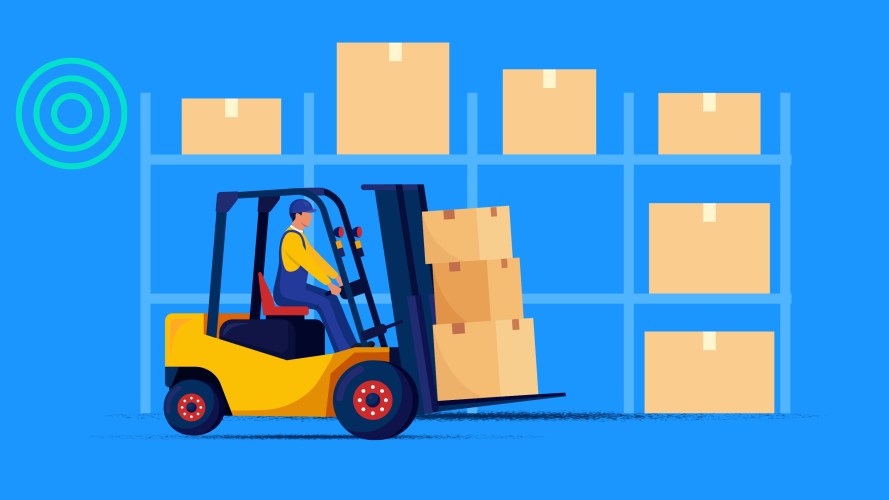Your product spends a lot of time traveling throughout your company. As it moves from basic materials to distribution, it is part of multiple activities that mold it into what it is eventually sold to your customers.
Are these activities enhancing your product’s value for your customers?
That’s where the value chain comes in. It helps identify and analyze ways you can add more value to the sequence of activities before your product ends up in a customer’s hands.
What you’ll learn:
- What is a value chain?
- Examples of value chains
- Importance of value chains in business
- What is a value chain analysis?
- Future trends in value chains
Hit key KPIs with real-time pipeline insights
What could you do with relevant insights at your fingertips? Sell smarter, take action, and hit your forecasts. That’s how Sales Analytics works.



What is a value chain?
A value chain is the series of business activities a company performs to create a product or service from start to finish. The idea of a value chain was introduced by Michael Porter in his 1985 book, Competitive Advantage: Creating and Sustaining Superior Performance.
The value chain identifies each activity where value is added — such as sourcing, manufacturing, and sales — and examines how these activities interact. By defining these activities, a company can analyze and optimize them in terms of cost and quality to improve its competitive advantage.
Value chain vs. a supply chain
A supply chain is a network of individuals and companies involved in the creation, production, and distribution of a product or service. The chain may involve suppliers, manufacturers, warehouses, transportation companies, and retailers. A value chain looks at the series of activities within the supply chain to find ways to enhance the product’s value for the customer.
Components of a value chain
A value chain framework consists of five primary activities and four supporting activities a company’s product goes through. Each activity seeks to increase profit margins by adding value for customers. Primary activities add value by helping build and sell a company’s products or services:
- Inbound logistics: Acquire materials and supplies that a business needs from external sources, like warehouses or assembly plants.
- Operations: Take the materials from inbound logistics and transform them to the finished product. It may include prototyping, production, testing, and quality control.
- Outbound logistics: Move the finished product from a company to its customers, including packaging, shipping, and installation.
- Marketing and sales: Ensure potential customers are aware of the product and its benefits through advertising, promotional campaigns, managing distribution channels, and pricing.
- Service: Customer service and product support that happens after a purchase, such as handling customer issues or advising on product repairs.
Secondary activities support the primary activities:
- Procurement: Find and maintain vendors to obtain items such as raw materials, consumables, machinery, equipment, or office supplies.
- Technology development: Manage IT and technology resources, such as software, artificial intelligence, and cloud computing.
- Human resource management: Ensure the organization has the staff to perform value chain activities through recruitment, hiring, training, and compensation.
- Firm infrastructure: The framework for an organization’s operations, including general management, accounting, finance, legal, and government affairs.
Examples of value chains
Here’s how a company can add value to its product or service through the primary activities in a consumer goods value chain, using Top Tech Company’s laptop as an example.
- Inbound logistics: Top Tech orders its laptop glass from a supplier in Asia. It switches to the supplier’s Canada warehouse to reduce shipping costs.
- Operations: During testing, Top Tech discovers that the laptop glass can also be used for its computer monitors, saving money across products.
- Outbound logistics: Top Tech sells the laptop on its website. It changes to eco-friendly packing materials.
- Marketing and sales: The marketing team launches an advertising campaign offering a laptop discount for the first 100 customers.
- Service: When a problem arises with the laptop’s keyboard, Top Tech sends replacement parts to all its customers.
Importance of value chains in business
A value chain helps identify the activities that increase your profits after subtracting the cost of performing those activities. You can eliminate the weaker activities that don’t generate value and optimize the stronger ones that do.
Some business benefits of value chains include:
- Connecting different activities: Internal linkage refers to how the activities in the value chain interact with one another. Optimizing one activity can lead to benefits in other divisions. By improving the coordination among activities, an organization can gain competitive advantages. For example, the eco-friendly packaging used by outbound logistics could be promoted by the marketing department as good corporate citizenship.
- Enhance the organization’s visibility: Once a value chain is established, teams can access it and gain an understanding of the company’s activities and where they could make an impact on value.
- Creating a target operating model: A value chain allows you to create a roadmap for future major change initiatives, such as replacing the company logo or obtaining an environmental certification. It acts as a checklist to ensure the impacted activities across the company are addressed.
- Evaluating an acquisition fit: By comparing a company’s value chain with that of a potential acquisition, you can assess whether the two companies are a good fit.
What is a value chain analysis?
A value chain analysis is a strategic method used to assess each primary and secondary activity in the chain. It determines how each activity in a company contributes to the value of its product or service.
There are three steps to a value chain analysis:
- Create a value chain diagram: Begin by mapping out your organization’s primary activities and the secondary activities that support them. List the sub-activity tasks involved for each.
- Analyze each sub-activity: Determine the cost and value of each activity. Look for opportunities to create more value while still keeping costs in check.
- Examine the linkages: Identify how different activities are interconnected and dependent on one another.
A good place to start your analysis is using your CRM analytics. The tool provides insights into customer data and sales team performance, which are crucial to understanding your value chain. For example, if you see that product demos lead to more closed deals, then you might consider optimizing that sales area for greater value.
Join the Salesblazer movement
We’re building the largest and most successful community of sales professionals, so you can learn, connect, and grow.

Future trends in value chains
The rise of globalization has significantly influenced value chains as an increasing number of goods, services, and people extend across borders. The internal activities in the value chain are being moved externally, such as with the outsourcing of production to another country or hiring a nearshore customer service center. By expanding their operations internationally, companies find cost efficiencies with value chain activities.
Emerging technologies and automation are also driving the growth trend of value chains. More than half of growing small businesses accelerated investments in sales and customer service technology over the past year, according to the Salesforce Small and Medium Business Trends Report. Their top motivators are to increase productivity (62%) and improve business agility (60%).
An automation platform that connects sales, marketing, and service activities can help detect linkages between them in the value chain. The platform enables teams to share customer data and engage customers across different channels. Generative AI can assist by responding to customer issues via chatbots or drafting marketing emails to customers. Incorporating this technology in your tech stack can potentially increase your product or service’s value and enhance the effectiveness of value chain activities.
Start delivering value to your value chain activities
A value chain plays a pivotal role in creating value for a company’s customers. By analyzing each activity of the chain, you’ll capitalize on opportunities to stand out from the competition, reduce costs, and boost profits. You’ll drive more value to your customers, resulting in stronger relationships and higher satisfaction.
Use AI to hit your forecast every time
Spot and address pipeline gaps that threaten your forecast. Discover how with Sales Analytics from Sales Cloud.




























